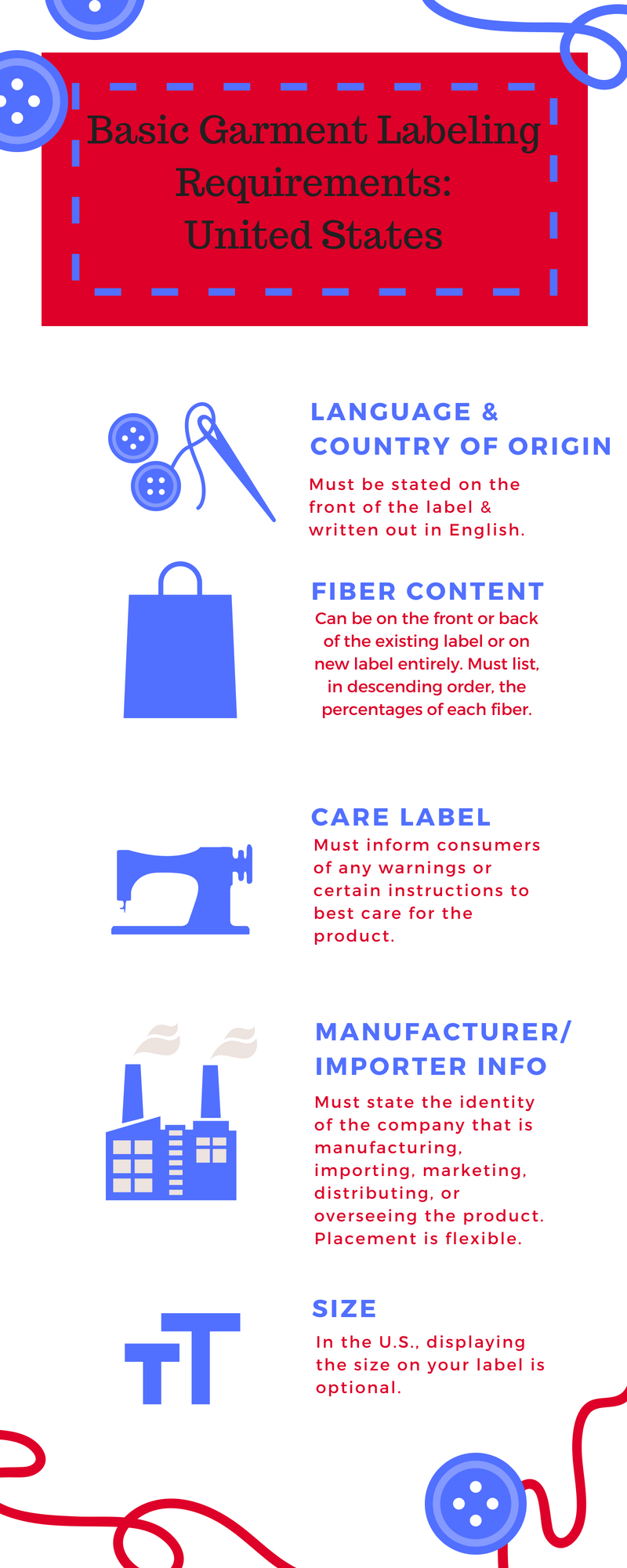The Beginner's Guide to Textile Labeling Requirements
Updated July 30, 2018
Labels are aspects of clothing that often take a back seat to the more creative elements of launching an apparel brand. However, they do require special attention because without a proper label, you may not be able to distribute your garments. The U.S. Federal Trade Commission (FTC) and U.S. Customs and Border Protection (CBP) administer three primary regulations that dictate what information manufacturers must include on garment labels.
The 3 regulations, which have been in place for several years, are:
While it may take planning and work to ensure that your labels comply with the requirements set forth in the U.S., it is a worthwhile process and not too difficult.
If you’re making any type of clothing or apparel, you need a label. Plain and simple. Your label must include the following items (that will be broken down for you a little later):
Country of Origin
Fiber Content
Manufacturer/Importer Information
The exciting part of getting clothing labels made is that you have flexibility on how to place the required information on your apparel. All of that information can appear on one label or on separate labels. The labels themselves can be any shape or size. As long as your labels are securely attached to the garment and easy to read, notice and obtain, you should be fine.
Now, let’s get specific.
Country of Origin
This part of the label is crucial and has to correctly follow the guidelines set forth by the U.S. (or any country for that matter, however, for the purpose of this post we will be specifically focusing on the requirements in the U.S.).
The country of origin means the country where your product was made. This is important to consumers for many reasons, some people only want to purchase products made in the United States, so having this information on the label is useful for them. This information must be clearly stated on the front of the label, in English.
Fiber Content
Fiber content will simply state what materials you used to create your product. Take note that the purpose of this part of the label is to protect those with allergies, so it is important to label your garments correctly.
When it comes to fiber content, you do have a little bit more leeway with how you present it to your consumers. It can be on the front of the label with the country of origin, it can have its own separate label, or it can be on the back of an already existing label as long as it is able to be read. You must also list it in descending order of percentages by weight of each fiber in the product followed by the generic fiber name. If the fiber content is less than 5%, you do not have to list it on your label. Keep in mind, if it is less than 5% but provides a functional significance, it may be still be worth listing.
Manufacturer/Importer Information
This simply is in place so that you list the company that manufacturers, imports, distributes, markets, or oversees the product. The placement of this also has flexibility as it can be placed on the front of the label with the country of origin, it can have its’ own separate label. It can also be inside or outside of the product.
THINGS TO REMEMBER WHEN CREATING CLOTHING LABELS
If you’re really stuck and not sure what to do, look at labels on items that are similar to your own product. By becoming familiar with labels, you will start to recognize exactly what you already have/what you are missing.
The FTC does not need to approve your label which means that it is your job to make sure that it complies with all of the requirements.
There can be large fines and/or potential jail time for people whose labels do not comply with the requirements.
Keep in mind that each ISO name has a generic name that corresponds.
About the Author
Mariah Marie creates videos and writes about beauty, lifestyle and travel on her website Your Girl Mariah. follow Mariah on Instagram.

